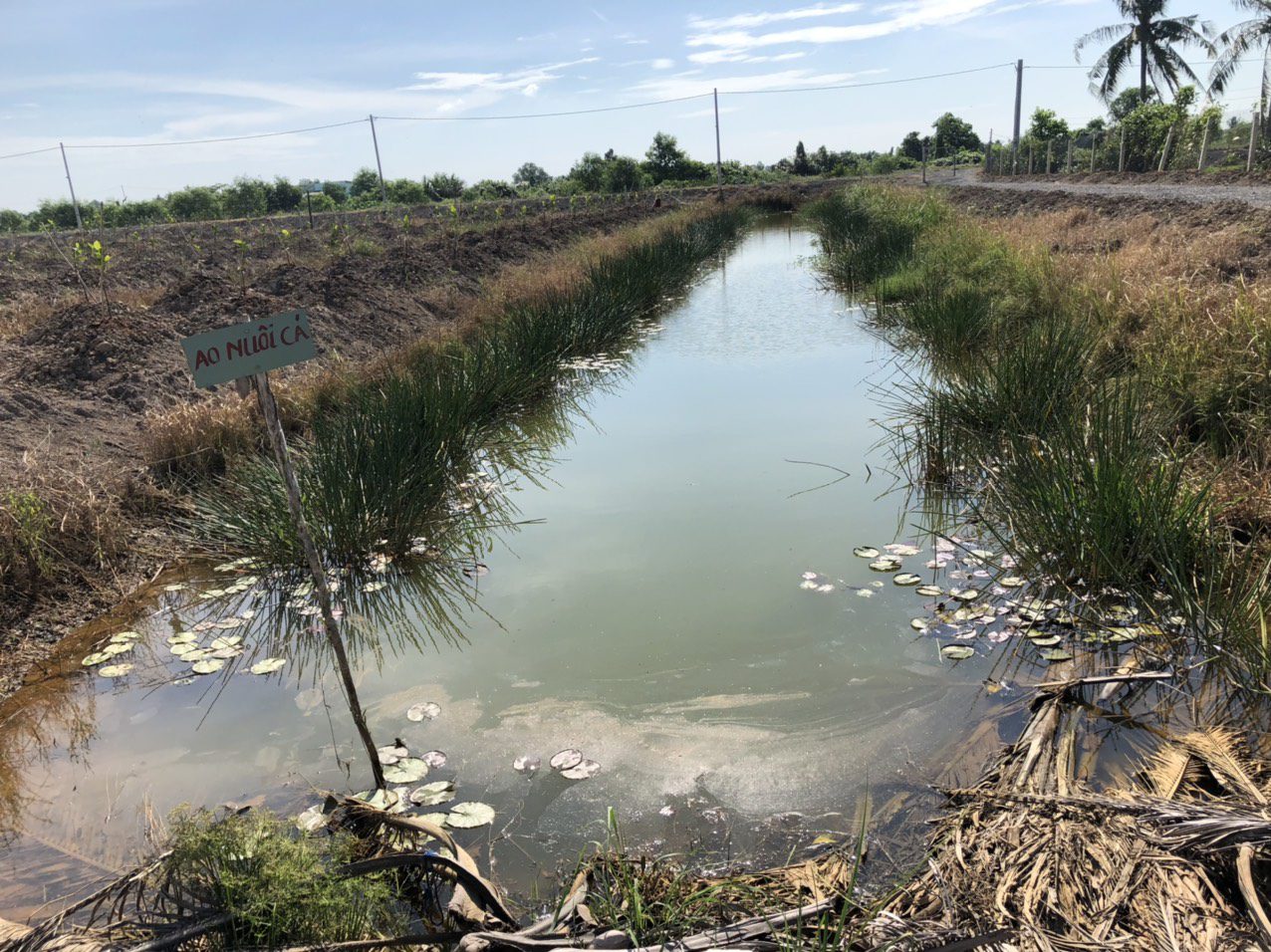SOLVING THE PROBLEM OF ACID SULFATE SOIL IN THE SHRIMP PONDS
Currently, there are about 15 million hectares of acid sulfate soil in the world, most concentrated in Southeast Asia (accounting for 50% of the area). Indonesia has the most prominent site of alkaline soil in the world (2 million ha), followed by Vietnam (1.8 million ha). Acid soil accounts for 63.40% of the entire earth in Vietnam. which, the area of earth contaminated with alum in the Mekong Delta (Mekong Delta) is 41.1% in most provinces: Ca Mau, Ben Tre, Tra Vinh, Long An, Tien Giang, Dong Thap, Kien Giang, An Giang, Vinh Long, and Hau Giang. The Mekong Delta contributes 71% of the aquaculture area and 54% of the country’s aquatic production.
Water in ponds built in brackish, coastal, or freshwater areas can have a low pH due to the formation of potentially acidic soils. For aquaculture ponds in areas contaminated with alum, the amount of alum will leak from the ground into the water during the process of digging the pond. In addition, when it rains, the rainwater will wash away alum from the shore. pond contaminated with alum.
There are 2 types of alum affecting shrimp ponds today:
- Iron alum (red water): double salt of iron(III) sulfate combined with an alkali metal or ammonium salt. This type of alum makes the water red, and the legs, gills, and tail yellow.
- Potassium alum (clear water): double sulfate salt of potassium and aluminum. When the pond has alum, the water is apparent, it is challenging to color, and the shrimp is very slow to grow.
Effect of acid sulfate soil on the growth of shrimp:
- Watercolor is challenging to cause due to the slow growth of algae, especially for juvenile shrimp (PL) in the early stages, watercolor is extremely important.
- Reducing pH in ponds, in which pH is one of the critical factors in the culture process, increases the toxicity of toxic gases.
- Low pH causes shrimp stress, poor appetite, difficulty molting, soft shell, slow growth, dark gray shrimp, and suspended alum compounds cling to gills, hindering the respiration process of shrimp.
- Low pH affects the activation of enzymes in the pond. Thereby making the use of microbial products or biological products to treat bottom water and supplement feed ineffective.
To limit sulfate soil in shrimp ponds, we should
Select sites to build ponds in areas less susceptible to alum; prepare and renovate the pond very carefully, apply lime to the pond bottom, wash the slug many times to clean it before supplying water to the pond; treat the incoming water very clean, it is recommended to use an environmental test kit to see if there is iron content in the feed water.
How to treat acid sulfate soil pond:
1. Lining the entire bottom and pond banks:
- This is how to use tarpaulin to cover the bottom of shrimp ponds and lakes These tarpaulins are usually made of plastic material with different sizes and thicknesses to suit the area of the shrimp pond and the needs of the shrimp farming industry. shrimp and fish farming households. The most common materials of shrimp pond liners are HDPE, PVC, and EPDM rubber. These are all primary materials with high durability and are not toxic to shrimp seeds and users. This method has the main effect of preventing alum, preventing erosion, creating a hygienic farming environment, and limiting the risk of diseases in farmed shrimp.
2. Chemical use (EDTA or lime):
- Lime: This treatment is used by many farming households. But the fact is that there are ponds with high alum, 1000m2, and it takes a ton of lime to prevent it. That is the limitation of this approach. Using too large a quantity is both time-consuming and costly.
- Beating EDTA is also a good way to prevent instant iron alum, EDTA aluminum alum does not have much effect, when hitting EDTA, it will precipitate Fe in the water, reduce alum and sink to the bottom of the pond, when farmers fan the water. then accidentally pulled the precipitate of iron alum up, it persisted in the water environment, not completely gone, a few days had to be beaten again.
The limitations of these two treatments are:
- Very high cost: Lining, cleaning tarpaulin, difficulty to enhance watercolor, labor.
- Using chemicals in large quantities is costly and time-consuming.
- Chemicals can only solve aluminum alum, iron alum does not have much effect.
- Alum still remains in the water, but is not lost, and can be alum after rains.
- Using microorganisms to treat alum:
Currently, using microorganisms is also a way to treat alum in shrimp ponds, which is applied by many farming households. Microorganisms can exist in alum water to help oxidize both iron and aluminum alum, microorganisms will promote the rapid conversion of alum into water-soluble compounds. Microorganisms also have the function of decomposing excess organic matter, food, algae carcasses, manure, etc. to help reduce toxic gas and reduce the odor of the pond.
The advantage of this method is that it is economical, environmentally friendly and highly efficient, and long-lasting.
Proposed solution from Thai Nam Viet:
Currently, Thai Nam Viet Company has successfully researched and developed a special microbiological product line capable of decomposing both iron and aluminum alum in ponds effectively. After 3 days of using the product, the pond watercolor will be clear and beautiful, the shrimp will be stronger, and eat up the bait. Only when solving the problem of alum in ponds, the use of microbial products to treat bottom water is extremely effective.

For more information, please contact 088 893 6366 or the website: www.thainamviet.com for more information. Our company will continue to present solutions to other problems in ponds in the next issue. I invite you to read it







